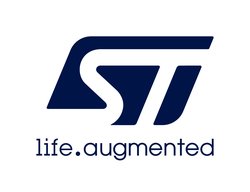NUCLEO-L552ZE-Q
STM32 Nucleo-144 development board with STM32L552ZE MCU, SMPS, supports Arduino, ST Zio and morpho connectivity
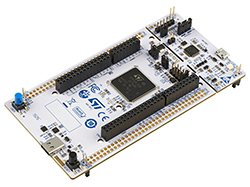
Overview¶
https://www.st.com/en/evaluation-tools/nucleo-l552ze-q.html
The STM32 Nucleo-144 board provides an affordable and flexible way for users to try out new concepts and build prototypes by choosing from the various combinations of performance and power consumption features, provided by the STM32 microcontroller. For the compatible boards, the internal or external SMPS significantly reduces power consumption in Run mode.
The ST Zio connector, which extends the ARDUINO Uno V3 connectivity, and the ST morpho headers provide an easy means of expanding the functionality of the Nucleo open development platform with a wide choice of specialized shields. The STM32 Nucleo-144 board does not require any separate probe as it integrates the ST-LINK debugger/programmer. The STM32 Nucleo-144 board comes with the STM32 comprehensive free software libraries and examples available with the STM32Cube MCU Package.
Microcontroller main features¶
https://www.st.com/en/microcontrollers-microprocessors/stm32l552ze.html
The STM32L552xx devices are an ultra-low-power microcontrollers family (STM32L5 Series) based on the high-performance Arm® Cortex®-M33 32-bit RISC core. They operate at a frequency of up to 110 MHz.
Board features¶
- STM32 microcontroller in LQFP144 package
- 3 user LEDs
- 2 user and reset push-buttons
- 32.768 kHz crystal oscillator
- Board connectors:
- ST Zio expansion connector including ARDUINO® Uno V3
- ST morpho expansion connector
- Flexible power-supply options: ST-LINK, USB VBUS or external sources
- On-board ST-LINK debugger/programmer with USB re-enumeration capability: mass storage, Virtual COM port and debug port
Board pinout¶
Pins Legend¶
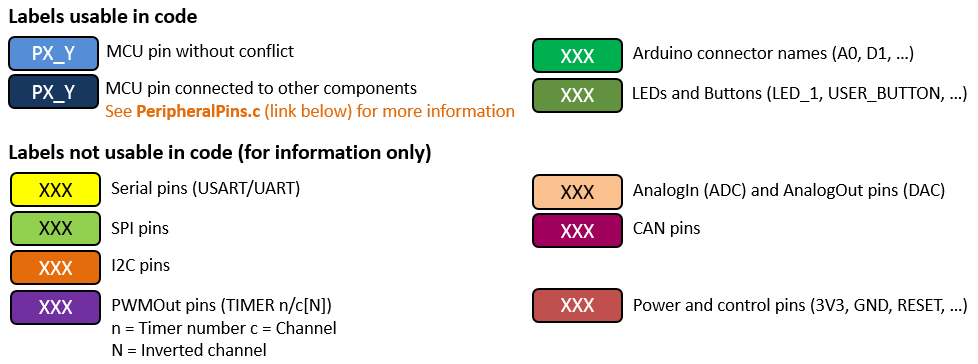
You can find more details on the available pins and labels in the PeripheralPins.c and PinNames.h files.
- ARMmbed/mbed-os repository on GitHub (up-to-date version, used with mbed CLI commands)
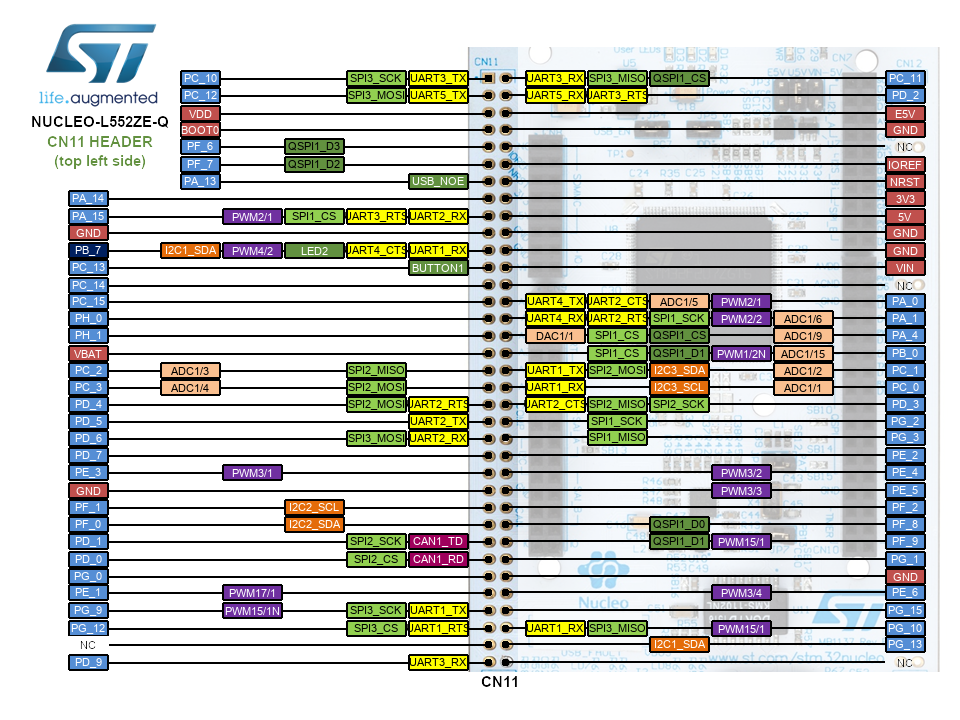
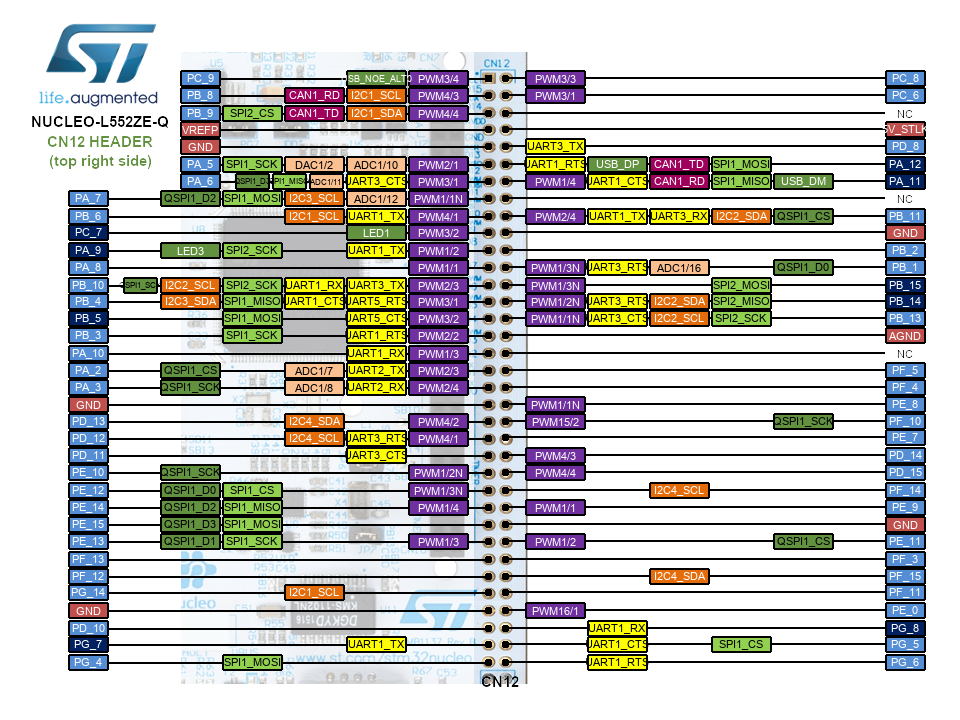
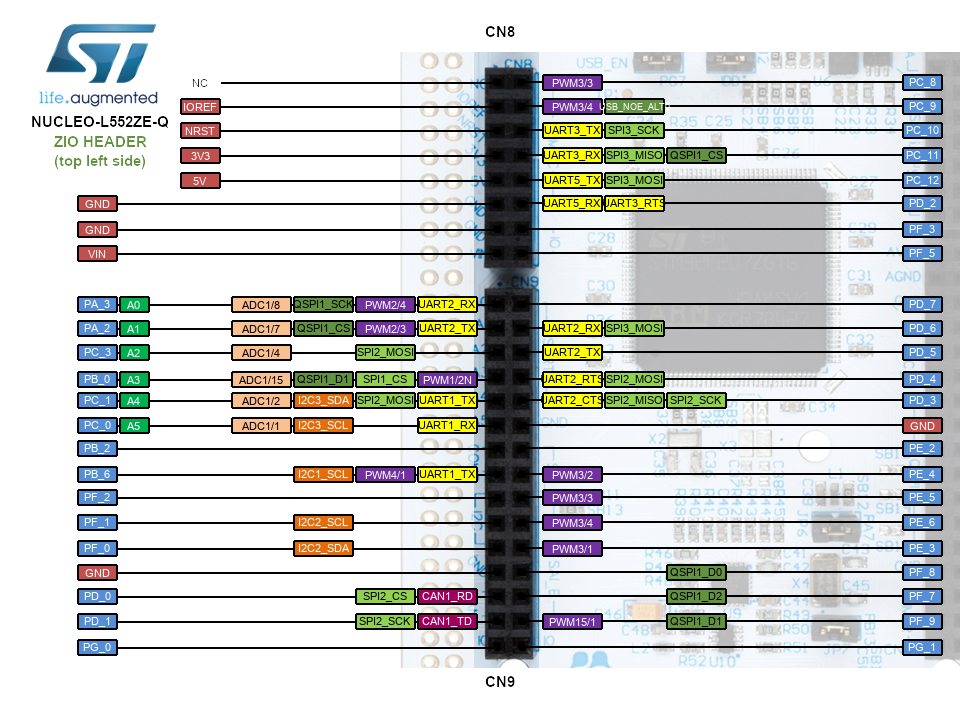
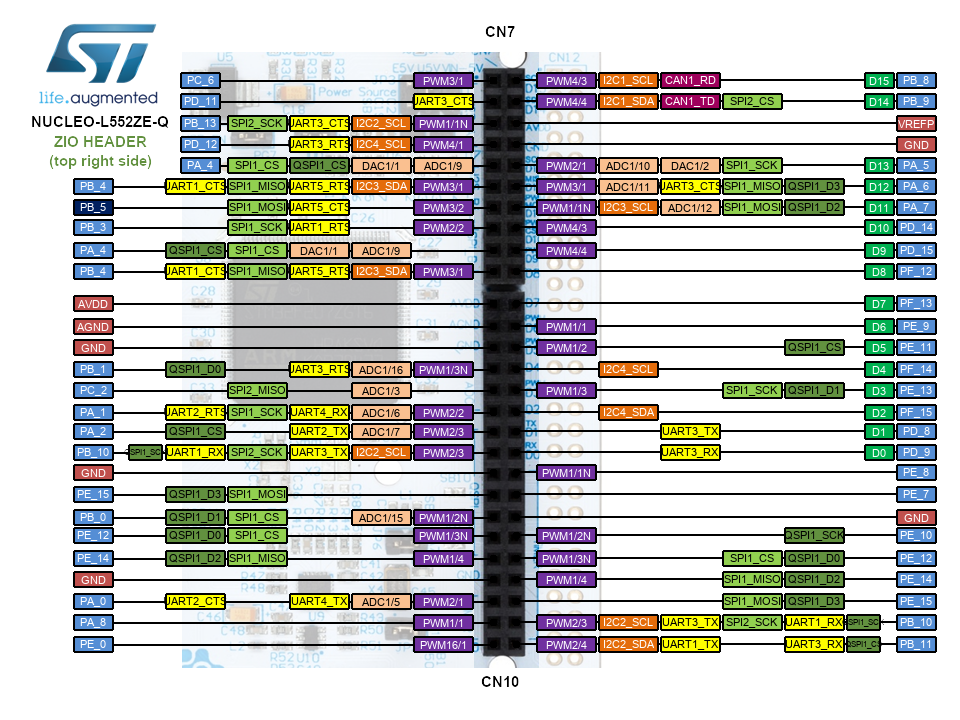
mbed-os examples¶
These official mbed-os examples have been tested on this board:
Technical references¶
Known limitations¶
The following section describes known limitations of the platform. Note that general issues are tracked into the mbed repository available on GitHub.
You need to log in to post a discussion
